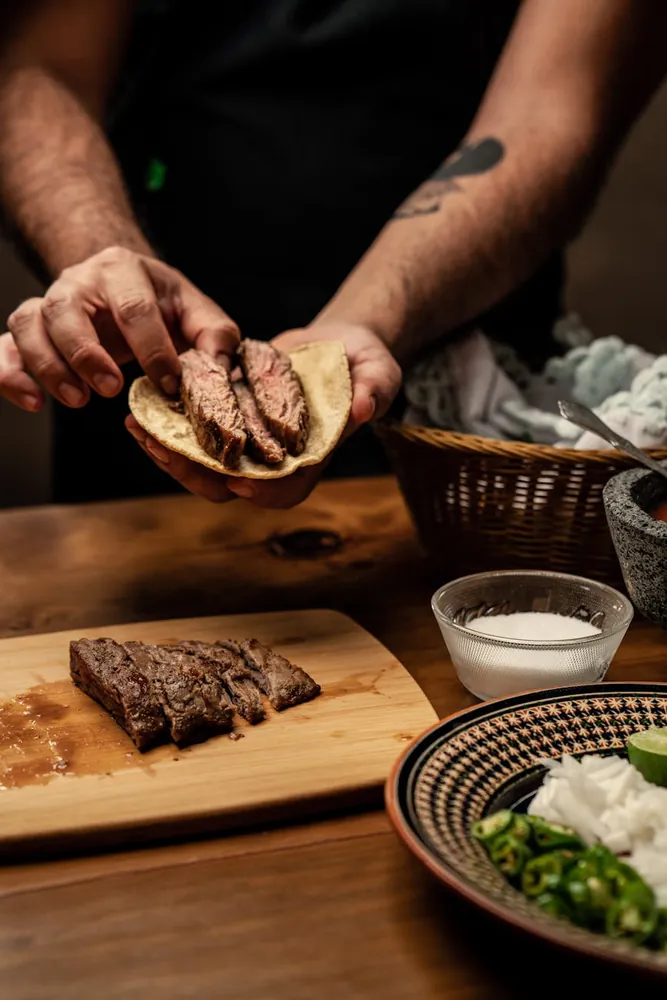Deciding Between Sous Vide and Traditional Techniques for Ultimate Steak Enjoyment

Understanding Sous Vide Cooking
Sous vide, a French term meaning 'under vacuum,' is a cooking method that involves vacuum-sealing food in a bag and cooking it to a very precise temperature in a water bath. This technique has been embraced by chefs worldwide for its precision and consistency, especially when cooking steaks.

The sous vide process allows you to cook steak evenly, ensuring that every part of the meat reaches the desired level of doneness without overcooking the exterior. This is particularly advantageous when aiming for a perfect medium-rare steak, where the meat should be pink throughout with a slight crust on the outside.
How to Cook Steak Using Sous Vide
- Preparation: Season your steak with salt, pepper, and any herbs or spices you prefer. Then, vacuum-seal the steak in a plastic bag. If you don't have a vacuum sealer, you can use the water displacement method with a ziplock bag.
- Set Up the Water Bath: Use a sous vide immersion circulator to heat the water to your desired temperature. For medium-rare, set it to 130°F (54°C).
- Cook: Place the sealed bag in the water bath. Cooking times can vary, but typically steaks are cooked for 1-4 hours.
- Searing: After sous vide cooking, remove the steak from the bag and pat it dry. Sear it on a hot pan or grill for about 1 minute per side to develop a flavorful crust.
The Traditional Techniques
Traditional methods for cooking steak include grilling, pan-searing, and broiling. Each technique brings out different flavors and textures, offering an experience that can vary widely based on the method chosen and the skill of the cook.
Grilling
Grilling over an open flame or coals imparts a smoky flavor that many steak enthusiasts find irresistible. The high heat ensures a delicious crust while allowing for a range of doneness levels from rare to well-done.
Pan-Searing
Pan-searing involves cooking the steak in a hot skillet with oil or butter. This method is praised for its ability to create a rich, caramelized crust while keeping the inside tender. It's particularly effective for thicker cuts like ribeye or filet mignon.
Broiling
Broiling uses high, direct heat from above to cook the steak, similar to grilling but typically indoors in an oven. This method is fast and can yield a nice char on the steak's surface.
Comparing Sous Vide and Traditional Methods
When deciding between sous vide and traditional methods, it's crucial to consider what you're looking for in your steak experience. Here are some factors to consider:
- Flavor: Traditional methods like grilling provide robust flavors from charring and smoke that sous vide cannot replicate.
- Texture: Sous vide excels in delivering consistent doneness throughout the steak. However, achieving a perfect crust relies heavily on post-cooking searing.
- Convenience: Sous vide allows for more hands-off cooking compared to traditional methods, which may require constant attention to avoid overcooking.
Practical Scenarios: When to Use Each Method
Your choice between sous vide and traditional cooking can depend on several situational factors. Let's explore some scenarios:
Sous Vide for Dinner Parties
If you're hosting a dinner party and need to prepare multiple steaks with consistent results, sous vide can be your best ally. It allows you to cook several steaks to the same level of doneness simultaneously, freeing you up to focus on other dishes or spend time with guests.
Grilling on Special Occasions
For those who savor the quintessential barbecue experience, grilling is unmatched. The act of cooking outdoors, combined with the unique flavors imparted by charcoal or wood smoke, makes it ideal for special occasions or gatherings where atmosphere matters as much as taste.
Troubleshooting Common Issues
Even with these techniques, challenges may arise. Here's how to tackle some common issues:
- Sous Vide Too Mushy: If your sous vide steak lacks texture, ensure you sear it adequately after cooking. A hot pan or grill can provide the needed contrast between the tender interior and crisp exterior.
- Traditional Overcooking: Use an instant-read thermometer to check internal temperatures regularly. Pull the steak slightly below target temperature; residual heat will continue cooking it as it rests.
Conclusion: Tailoring Your Approach
Ultimately, whether you choose sous vide or traditional methods will depend on your personal preferences and circumstances. Both have their place in crafting an exceptional steak experience. By understanding their strengths and weaknesses, you can make informed decisions that elevate your culinary creations.
 TrendLayer
TrendLayer